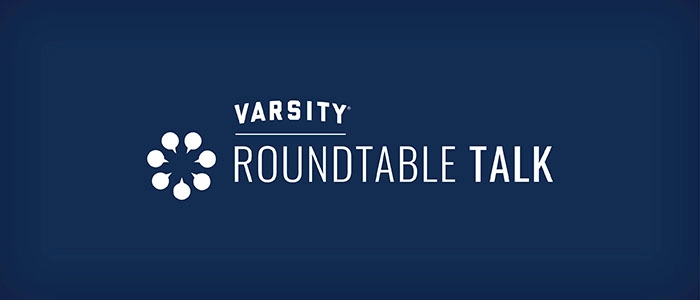Recently on Varsity’s podcast, Roundtable Talk, we sat down with Dr. Robyn Stone, a nationally recognized expert in aging policy and long-term care. As Senior Vice President of Research at LeadingAge and Co-Director of the LeadingAge LTSS Center, she has spent decades bridging the gap between policy, research, and real-world solutions to improve aging services.
Derek and Dr. Stone discussed the workforce crisis in long-term care, the challenges of educating consumers about aging services, and the role of technology in supporting caregivers. She also reflects on her decades in the field, offering insights on how change happens—slowly, but steadily.
The conversation was filled with fresh perspectives. Below are just a few of them.
YOU’VE SAID THAT SENIOR LIVING IS OFTEN AN “ACCIDENTAL CAREER”—A FIELD PEOPLE DON’T SEEK OUT BUT END UP LOVING. HOW CAN WE CHANGE THAT?
I’m actually an exception because I always knew I wanted to work with older adults. But over the years, I found that most people in aging services fell into these jobs by accident. Once they started, they realized they loved it.
One of my primary focuses has been shifting this from an accidental profession to one that people intentionally pursue. We’ve made some strides, but we still struggle. If you look at the challenges in recruiting nurses, social workers, and even geriatric specialists, it’s clear that aging services is still undervalued. I think that’s tied to fundamental ageism in this country.
WHAT ARE THE BIGGEST GAPS IN EDUCATING CONSUMERS ABOUT LONG-TERM CARE?
There’s still so much misunderstanding. People don’t grasp what long-term services and supports (LTSS) actually are. It’s about helping people function independently for as long as possible, but it intersects with medical care because these individuals also have chronic conditions, acute episodes, and post-acute needs.
Housing is also critical—if you don’t have a home that allows for mobility, your quality of life suffers. Most people still think Medicare pays for long-term care, which isn’t true. We’ve spent decades trying to educate people, but the reality is that most don’t think about it until they’re in crisis.
WHAT STRATEGIES DO YOU THINK ARE MOST EFFECTIVE FOR RETAINING WORKERS IN AGING SERVICES?
The best recruitment strategy is retention. If you retain staff, you don’t have to recruit as much. Retention is about creating a healthy workplace culture with both monetary and non-monetary investments. Higher wages matter—we still have 40% of this workforce on some form of public assistance, which is unacceptable.
But it’s also about training, strong supervisory support, and career pathways. Not every aide wants to become an RN, but they might want to specialize in geriatric care, behavioral health, or medication management. High-performing organizations are figuring out ways to create these pathways, which leads to better retention and lower turnover.
WHAT HAVE YOU LEARNED IN YOUR CAREER THAT YOU WISH YOU COULD TELL YOUR YOUNGER SELF?
Change takes a long time. It’s a journey, not a destination. When I started in the federal government in the early ’70s, I was filled with hopes and dreams about making the world a better place. Over time, I’ve learned that progress is incremental. But you have to keep your eye on the prize. It’s easy to get discouraged in policy and advocacy work, but if you focus on long-term goals and stay committed, real change does happen—even if it takes longer than you’d like.
